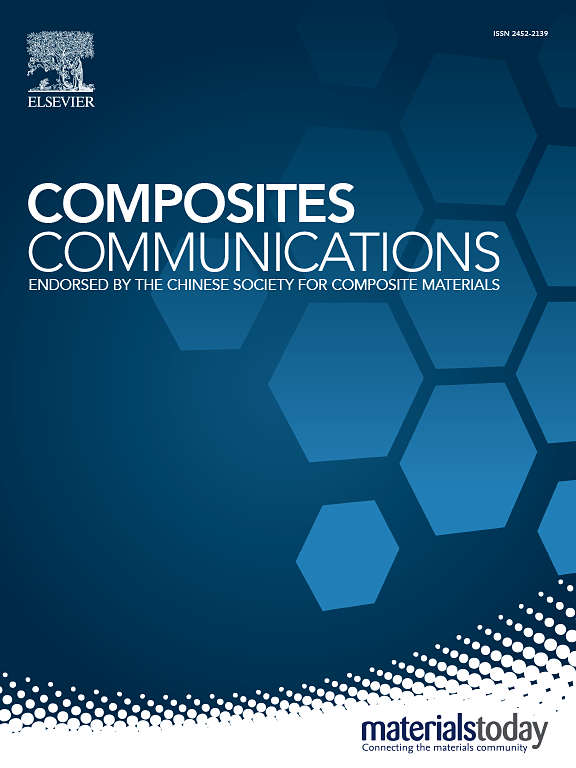Phenolic-based porous composite with embedded short carbon fiber/hollow spheres for mechanical properties and thermostability
IF 6.5
2区 材料科学
Q1 MATERIALS SCIENCE, COMPOSITES
引用次数: 0
Abstract
Lightweight composites, characterized by their high specific strength, hold significant potential for applications and exhibit promising development prospects in industries such as aerospace, marine, and machinery. In this paper, a novel lightweight and high temperature resistant phenolic-based porous composite was designed and prepare using boron-containing phenolic resin (BPF) as the matrix, with short carbon fibers (SCFs) and millimeter-scale SCFs/BPF hollow sphere (MSHS) as fillers, employing a dry powder molding method. The effect of SCFs content in the matrix resin on the density and quasi-static compression properties of the prepared phenolic-based porous composites was systematically investigated. The results showed that the phenolic-based porous composites containing 50 vol% MSHS and 40 wt% SCFs exhibited a favorable compressive strength of 58.1 MPa, with a density of only 0.78 g/cm3. Additionally, the prepared phenolic-based porous composites presented excellent high-temperature resistance, maintaining structural integrity and performance stability at temperatures up to 200 °C, where the compressive strength still remained at 14.7 MPa. The results indicated that this method is simple, scalable for mass production, and offers a promising approach to the efficient manufacturing of lightweight, high-performance composite materials.

求助全文
约1分钟内获得全文
求助全文
来源期刊

Composites Communications
Materials Science-Ceramics and Composites
CiteScore
12.10
自引率
10.00%
发文量
340
审稿时长
36 days
期刊介绍:
Composites Communications (Compos. Commun.) is a peer-reviewed journal publishing short communications and letters on the latest advances in composites science and technology. With a rapid review and publication process, its goal is to disseminate new knowledge promptly within the composites community. The journal welcomes manuscripts presenting creative concepts and new findings in design, state-of-the-art approaches in processing, synthesis, characterization, and mechanics modeling. In addition to traditional fiber-/particulate-reinforced engineering composites, it encourages submissions on composites with exceptional physical, mechanical, and fracture properties, as well as those with unique functions and significant application potential. This includes biomimetic and bio-inspired composites for biomedical applications, functional nano-composites for thermal management and energy applications, and composites designed for extreme service environments.
 求助内容:
求助内容: 应助结果提醒方式:
应助结果提醒方式:


